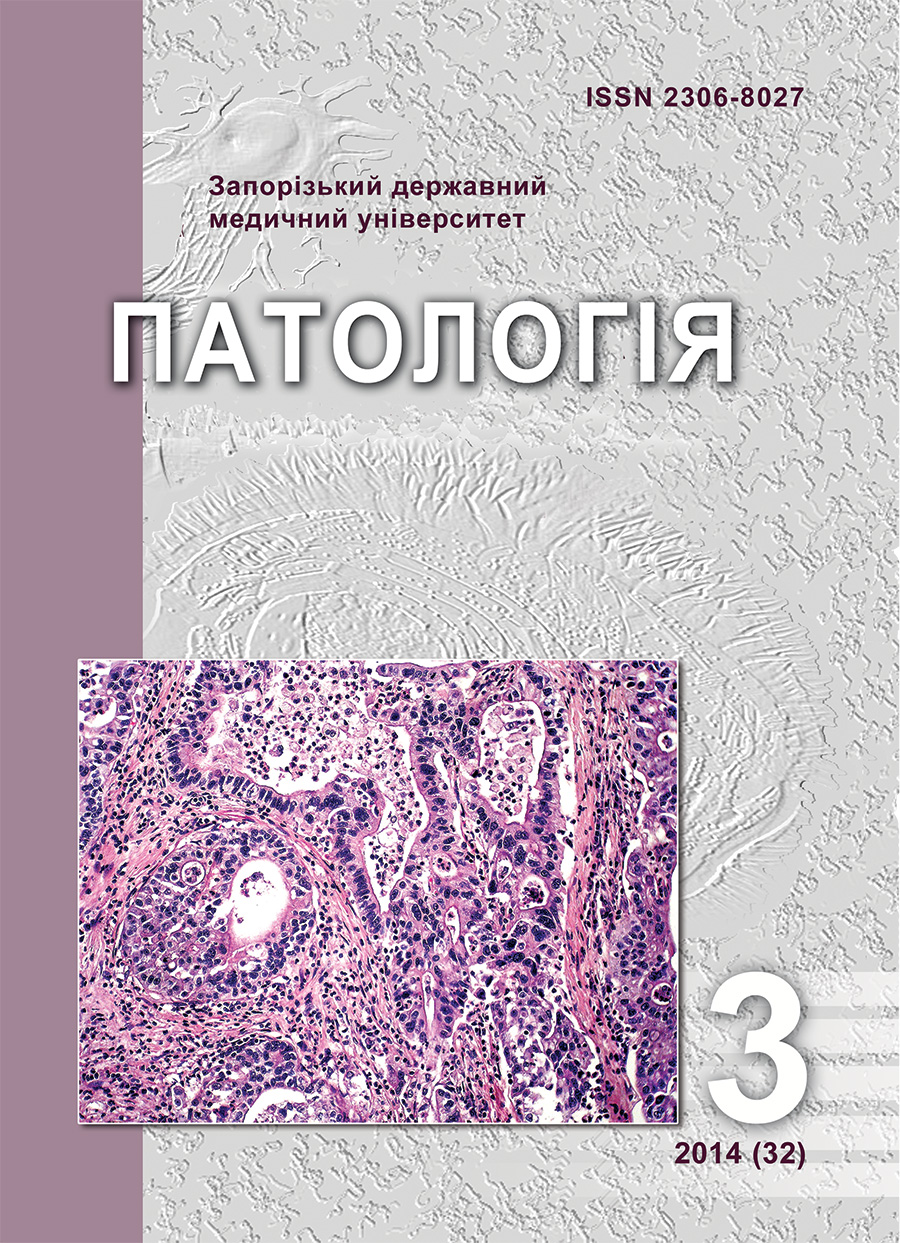Comparative characteristic of methods for determining the inflammation marker matrix metalloproteinase-9
DOI:
https://doi.org/10.14739/2310-1237.2014.3.37048Keywords:
Stroke, Matrix Metalloproteinase-9Abstract
Aim. We examined 88 patients with stroke, for whom the determination of the concentration of matrix metalloproteinase-9 (MMP-9) in serum was carried out by standard methods declared in instructions supplied with the reagents kit, and by the modified methods.
Results. It was determined that the modified methods of determining the MMP-9 can be used in predicting the occurrence of secondary hemorrhagic complications and to determine the feasibility and safety of thrombolytic therapy.
Conclusion. If the concentration of MMP-9 by the modified methods of determining is below 39,7 ng/ml, the percentage of secondary hemorrhagic complications is minimal.
References
Dziak, L. A., & Tsurkalenko, E. S. (2009). Insul't u molodykh pacientov [Stroke in young patients]. Zdorovia Ukrainy, 5/1, 12–15. [in Ukrainian].
Zozulia, Yu. P., Voloshyn, P. V., Mishchenko, T. S., & Dziak, L. A. (2005). Suchasni pryntsypy diagnostyky ta likuvannia khorykh iz hostrymy porushenniamy mozkovoho krovoobihu [Modern principles of diagnosis and treatment of patients with acute cerebrovascular circulation]. Kyiv. [in Ukrainian].
Suslina, Z. A., Varakin, Yu. A., & Vereshchahin, N. V. (2006). Sosudistye zabolevaniya golovnogo mozga [Vascular diseases of the brain]. E`pidemiologia. Osnovy profilaktiki. Moscow. [in Russian].
Khobzej, N. K., Golik, V. A., Gondulenko, N. A., Mishchenko, T. S. (2011). Osobennosti e`pidemiologii invalidnosti pri zabolevaniyakh nervnoj sistemy v Ukraine [Features of the epidemiology of disability in diseases of the nervous system in Ukraine]. Mizhnarodnyi nevrolohichnyi zhurnal, 5 (43), 13–16. [in Ukrainian].
Shamalov, N. A., Khasanova, D. R., Voznyuk, I. A., et al. (2007). Tromboliticheskaya terapiya pri ishemicheskom insul'te: opyt rossijskikh nevrologov. Po itogam II Rossijskogo mezhdunarodnogo kongressa «Cerebrovaskulyarnaya patologiya i insul't» [Thrombolytic therapy for ischemic stroke: the experience of Russian neurologists. According to the results of the II Russian international congress «Cerebrovascular pathology and stroke»] Zdorovia Ukrainy, 23/1, 10–13. [in Ukrainian].
Ahmed, N., Wahlgren, N., Grond, M., Hennerici, M., Lees, K. R., Mikulik, R., et al. (2010). Implementation and outcome of thrombolysis with alteplase 3–4,5 h after an acute stroke: an updated analysis from SITS-ISTR. Lancet. Neurology, 9, 866–874. doi: 10.1016/S1474-4422(10)70165-4.
Castellanos, M., Leira, R., Serena, J., Pumar, J. M., Lizasoain, I., Castillo, J., & Dávalos, A. (2003). Plasma metalloproteinase-9 concentration predicts hemorrhagic transformation in acute ischemic stroke. Stroke, 34, 40–46.
Hacke, W., Kaste, M., Bluhmki, E., Brozman, M., Dávalos, A., Guidetti, D., et al. (2008). Thrombolysis with Alteplase 3 to 4.5 hours after acute ischemic stroke. The New England Journal of Medicine, 359(13), 1317–1329. doi: 10.1056/NEJMoa0804656.
Jauch, E., Saver, J. L., Adams, H. P., Bruno, A., Connors, J. J., Demaerschalk, B. M., et al. (2013). Guidelines for the Early Management of Patients With Acute Ischemic Stroke A Guideline for Healthcare Professionals From the American Heart Association/American Stroke Association. Stroke, 44, 870–947. doi: 10.1161/STR.0b013e318284056a.
Lloyd-Jones, D., Adams, R. J., Brown, T.M., Carnethon, M., Dai, S., De Simone, G., et al. (2010). Heart disease and stroke statistics – 2010 update: a report from the American Heart Association. Circulation, 121, e46–215. doi: 10.1161/CIRCULATIONAHA.109.19266.
Silva, G., & Furie, K. (2009). Biomarkers in neurology. Front. Neurol. Neurosci, 25, 55–61.
Thom, T., Haase, N., Rosamond, W., et al. (2006). Heart disease and stroke statistics – 2006 update: a report from the American Heart Association Statistics Committee and Stroke Statistics Subcommittee. Circulation, 113, 85–151. doi: 10.1161/CIRCULATIONAHA.105.171600.
Downloads
How to Cite
Issue
Section
License
Authors retain copyright and grant the journal right of first publication with the work simultaneously licensed under a Creative Commons Attribution License that allows others to share the work with an acknowledgement of the work's authorship and initial publication in this journal.



